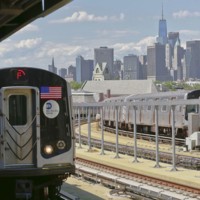Browse Exhibits (1 total)
New York City Subways

New York City’s current population is 8.6 million people, and that does not include the 62.8 million tourists that visit every year. In order to transport such an enormous amount of people through a very congested and busy city, a form of mass transportation is required. Explore parts of the New York City subway and identify key factors in its growth, influence, and overall impact. In 1894 William Lafayette Strong, the mayor of New York City, created a bill granting 40,000,000 dollars towards the creation of the New York Subway System. The subway system is an underground metro that allows for transportation and movement underneath a city. Ten years later in 1904 with 28 stations and 9.1 miles in track the subway was ready for its big debut. The NYC subway system now contains 468 stations and 669 miles of track and serves 5 million people a day, and 1.6 billion a year. The subway is currently run by the Metropolitan Transportation Authority and it runs through Manhattan, Brooklyn, Bronx, Queens, and parts of Long Island. Many aspects have led to bringing the subway to its current stance in society including its downfalls as well as its evolution and successes. The exponential influx of New York’s diverse population from 1904 to present day was an integral part in shaping the New York subway system, providing an efficient mode of transportation allowing the city and its people to thrive.